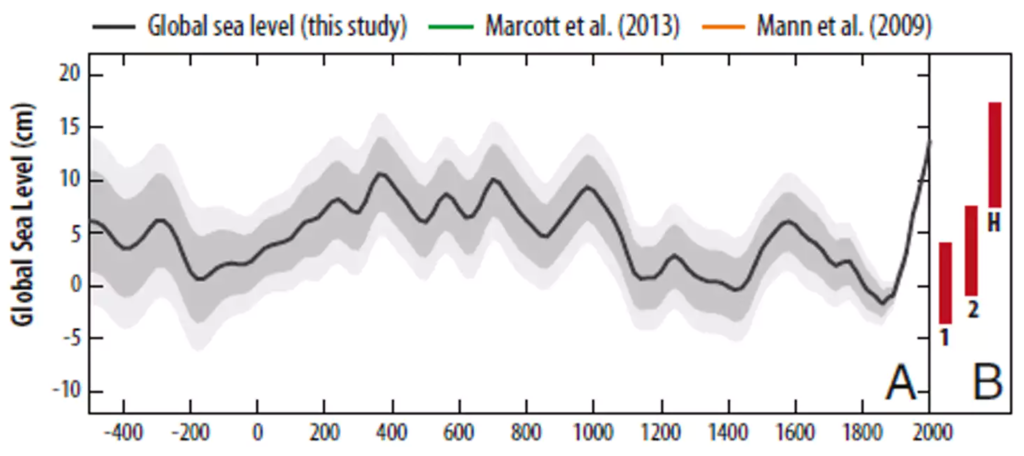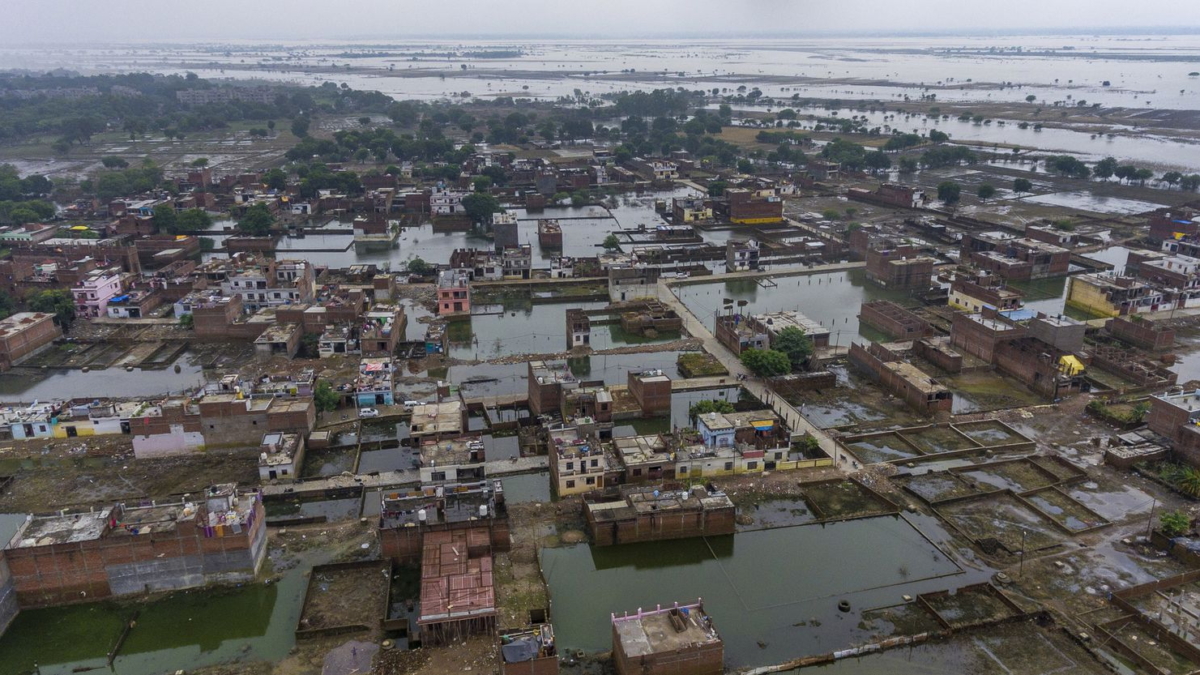Sea level rise could displace millions of people within two generations

By Jonathan Bamber and Michael Oppenheimer
20 May 2019
(The Conversation) – Antarctica is further from civilisation than any other place on Earth. The Greenland ice sheet is closer to home but around one tenth the size of its southern sibling. Together, these two ice masses hold enough frozen water to raise global mean sea level by 65 metres if they were to suddenly melt. But how likely is this to happen?
The Antarctic ice sheet is around one and half times larger than Australia. What’s happening in one part of Antarctica may not be the same as what’s happening in another – just like the east and west coasts of the US can experience very different responses to, for example, a change in the El Niño weather pattern. These are periodic climate events that result in wetter conditions across the southern US, warmer conditions in the north and drier weather on the north-eastern seaboard.
The ice in Antarctica is nearly 5km thick in places and we have very little idea what the conditions are like at the base, even though those conditions play a key role in determining the speed with which the ice can respond to climate change, including how fast it can flow toward and into the ocean. A warm, wet base lubricates the bedrock of land beneath the ice and allows it to slide over it. […]
With colleagues from the UK and US, we undertook a new Structured Expert Judgement exercise. With all the new research, data and knowledge, you might expect the uncertainties around how much ice sheet melting will contribute to sea level rise to have got smaller. Unfortunately, that’s not what we found. What we did find was a range of future outcomes that go from bad to worse.
We gathered together 22 experts in the US and UK in 2018 and combined their judgements. The results are sobering. Rather than a shrinking in the uncertainty of future ice sheet behaviour over the last six years, it has grown. [more]
Climate change: sea level rise could displace millions of people within two generations
ABSTRACT: Despite considerable advances in process understanding, numerical modeling, and the observational record of ice sheet contributions to global mean sea-level rise (SLR) since the Fifth Assessment Report (AR5) of the Intergovernmental Panel on Climate Change, severe limitations remain in the predictive capability of ice sheet models. As a consequence, the potential contributions of ice sheets remain the largest source of uncertainty in projecting future SLR. Here, we report the findings of a structured expert judgement study, using unique techniques for modeling correlations between inter- and intra-ice sheet processes and their tail dependences. We find that since the AR5, expert uncertainty has grown, in particular because of uncertain ice dynamic effects. For a +2 °C temperature scenario consistent with the Paris Agreement, we obtain a median estimate of a 26 cm SLR contribution by 2100, with a 95th percentile value of 81 cm. For a +5 °C temperature scenario more consistent with unchecked emissions growth, the corresponding values are 51 and 178 cm, respectively. Inclusion of thermal expansion and glacier contributions results in a global total SLR estimate that exceeds 2 m at the 95th percentile. Our findings support the use of scenarios of 21st century global total SLR exceeding 2 m for planning purposes. Beyond 2100, uncertainty and projected SLR increase rapidly. The 95th percentile ice sheet contribution by 2200, for the +5 °C scenario, is 7.5 m as a result of instabilities coming into play in both West and East Antarctica. Introducing process correlations and tail dependences increases estimates by roughly 15%.
SIGNIFICANCE: Future sea level rise (SLR) poses serious threats to the viability of coastal communities, but continues to be challenging to project using deterministic modeling approaches. Nonetheless, adaptation strategies urgently require quantification of future SLR uncertainties, particularly upper-end estimates. Structured expert judgement (SEJ) has proved a valuable approach for similar problems. Our findings, using SEJ, produce probability distributions with long upper tails that are influenced by interdependencies between processes and ice sheets. We find that a global total SLR exceeding 2 m by 2100 lies within the 90% uncertainty bounds for a high emission scenario. This is more than twice the upper value put forward by the Intergovernmental Panel on Climate Change in the Fifth Assessment Report.
Ice sheet contributions to future sea-level rise from structured expert judgment


